 Hardtail or full suspension? This question comes up all the time on the Singletracks Forums so hopefully this quick list of the pros and cons of each of mountain bike style will help you decide which one will work better for you.
Hardtail or full suspension? This question comes up all the time on the Singletracks Forums so hopefully this quick list of the pros and cons of each of mountain bike style will help you decide which one will work better for you.
My Perspective
I will be 40 this year, and although I’ve ridden bikes all my life, I’ve been a serious mountain biker since I moved to Colorado in 2004. I started out on a Specialized Rockhopper hardtail which I rode for 4 years. Then I got a Giant Trance full suspension bike and rode it for 3 years. Now I’m riding a hardtail again, but this time on a 29-inch wheels.
What is the difference?
Those of us who have been riding for a while take this for granted, but for those who are new to the sport the differences may be a little hazy. Here’s the quick and dirty info:
A hardtail is a bike with a solid frame and it usually has a suspension fork on the front. Here is a typical hardtail model:
[see_also id=”52899″][/see_also]
A full suspension (FS) bike has the same fork out front, but it has a frame that consists of two pieces, a front triangle and rear triangle, that are joined by pivots. This allows the two sections of the frame to move independently, and the rate of that movement is controlled by a shock absorber. Here is a typical full suspension model:
Okay, so which is better?
The answer is: it depends. It comes down to personal preference, riding style, average terrain encountered, and other factors. With that being said, however, we’ll go over what each model excels at, as well as some limitations of each. This should help you decide which model better fits your riding style, or perhaps it will convince you to buy one of each! Here goes…
Climbing
Hardtail bikes transfer pedaling power to the rear wheel more efficiently. On non-technical surfaces, this results in better acceleration and makes it easier to sustain higher speeds over a long time. Once the terrain turns technical, rear suspension allows more of the available rear wheel power to actually reach the ground by allowing the wheel to better articulate over obstacles. This helps to maintain traction and mitigates “spinning out.” Also, with FS it is generally easier to stay seated while climbing.
Downhill
On bumpy, technical downhill trails, FS bikes have a clear advantage – but don’t count the hardtail out just yet. I’ve ridden plenty of technical stuff on a hardtail and it handles just fine. The difference is that the “suspension” is your legs. The net result is getting tired faster, but if you’re conditioned to it, it’s not a big deal. In my opinion, technical downhill on a hardtail also makes you choose a better line, and in the long run can make you a better overall rider.
[see_also id=”52902″][/see_also]
Maintenance
There is no disputing that hardtails require less long term maintenance. All of those pivots and linkages on the FS will need periodic servicing, and the rear shock will need new seals every season or two. Frame articulation causes cables to rub on the frame, and the chain has to work harder to keep up with everything. If you enjoy simplicity and want to keep your maintenance costs low, a hardtail is a good choice. (Or a rigid singlespeed for that matter, but that’s a topic for another post.)
Weight
Advancements in modern frame design are constantly shifting the meaning of “lightweight” in mountain biking. In general a hardtail can be built lighter than the average FS bike, but there are also some seriously lightweight FS bikes now too. Whichever type you’re considering, as long as the weight is reasonable, I wouldn’t worry too much about it. How well it fits and the overall ride quality are more important.
Price
The basic hardtail bike design has existed for over 100 years. FS design is a hotbed of innovation and various patents have been granted, resulting in license agreements between some of the bike manufacturers. Guess who ultimately pays those R&D and licensing costs… you do! The point is that if you are on a strict budget, you can probably get more bike for your buck with a hardtail.
Comfort (These Old Bones)
As I mentioned, I’m almost 40. It didn’t used to bother me to bomb down miles of rough downhill, holding my rear off the saddle all the way. The older I get, the nicer it is to be able to sit down on all but the roughest stuff. I also find that I can go faster over rough stuff with the FS. On the other hand, the hardtail 29er that I’m currently riding has a much smoother ride than my old 26er hardtail. It’s like a magic trick!
The Bottom Line
If you’re just starting out, on a really tight budget, or just enjoy simplicity, you should definitely consider one of the great hardtails on the market today. It can get you out there riding without costing a lot of coin up front and saves on maintenance costs down the line.
If you know you want to huck drops or ride rough, technical trails most of the time or if you’re an older rider and just want a smoother ride, then you’ll likely be happier on a full suspension bike. As I’ve outlined, each type of bike excels in different areas, and it really does come down to your preference and the type of riding you like to do.
So what do you think – hardtail or full-suspension?
[see_also id=”199145″][/see_also]










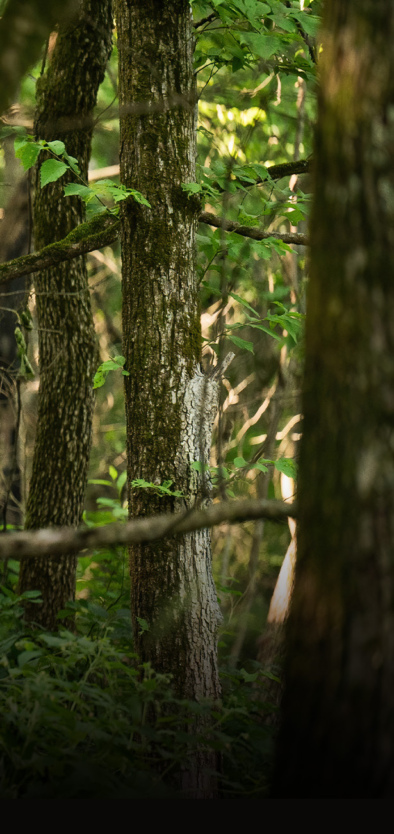




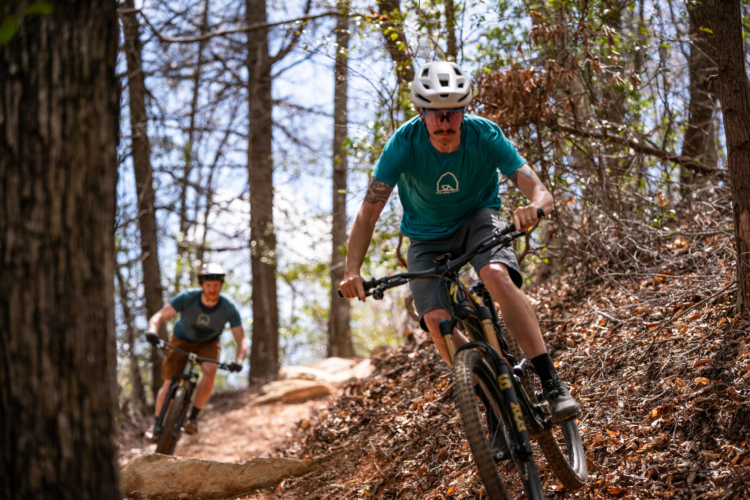
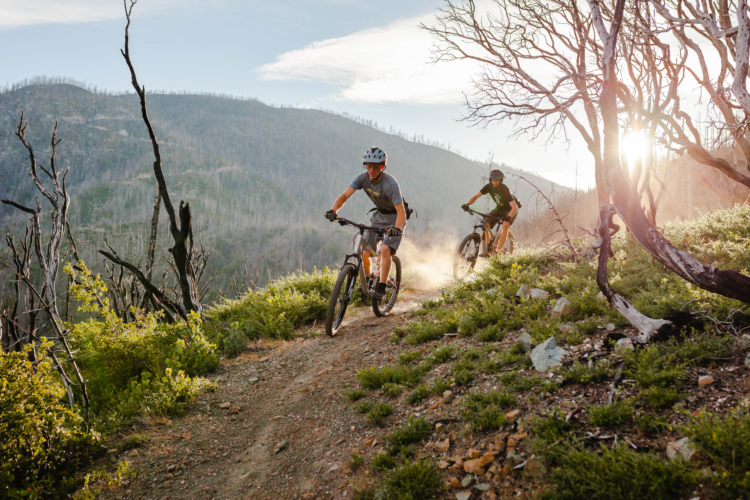
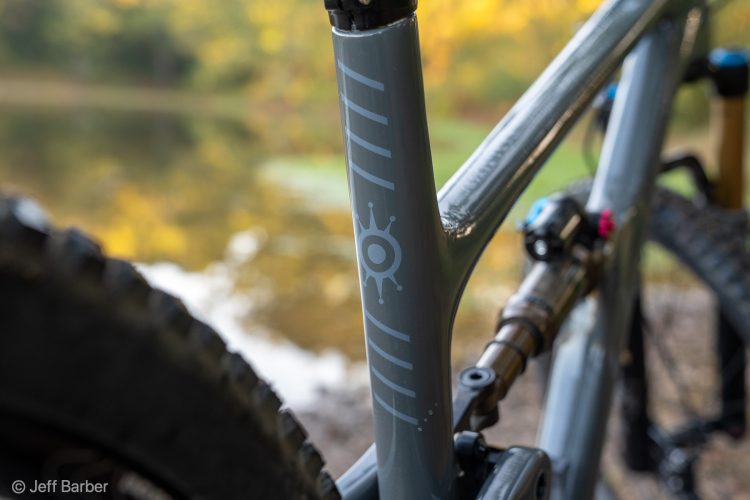
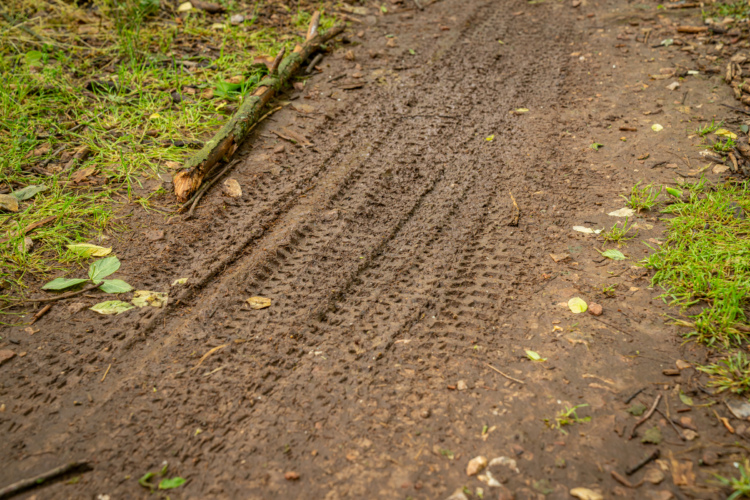

27 Comments
Jul 18, 2011
bv
white-knuckled.blogspot.com
Jan 15, 2013
I am late 40's and have had FS for over 16 years...specialized, GT, Turner etc....I now have a Meta 5 as I guide in NZ (mostly heli) and want the travel. However when riding on the tracks around lake Wanaka, New Zealand I have purchased a 29er hard-tail.
So for my 2c ...having 2 x bikes...all mountain 26 and a 29er Hardtail (carbon) the technology in the carbon hard-tail 29ers is amazing...a little nervous about the lower back...but a better riding position, (seat forward) should assist.
Jul 17, 2011
Good article.
Jul 19, 2013
I also kept my carbon handrail, and now I can choose which option oft the course and type of riding. And yes, at 44 how well my back feels in the morning!
Don't laugh you will all join me sooner or later....ha, ha! Great article.
Jul 17, 2011
At Peteman7, My Giant locks out front and rear, but it's still not quite the same as a true hardtail feel.
Dec 13, 2016
Apr 11, 2014
At the end of the day, I've never had enough money to spend that I didn't want the lighter frame or better components on the hard tail. And, my friends who got FS bikes eventually came back to hard tail.
Jul 15, 2011
Jul 18, 2011
It's nice to see so many in agreement that it's a "what works for you" mentality - there are a lot of bikes, a lot of riding styles, and a lot of trails, so do what works for you!
Jul 15, 2011
I've had the same thought about hardtails making people better riders in terms of picking lines but every time I get on a FS bike I tell myself I don't have to pay as much attention and I end up breaking stuff!
It is indeed possible to ride very technical terrain with either type of bike; the only difference is the speed you'll be able to ride it. Same goes for climbing - both bikes will get you up the hill but the HT will usually make it easier.
At the end of the day it's a combination of all these factors that makes a particular style of bike the right choice for each person. You'll know which one is best for you once you've had a chance to try both.
Jul 16, 2011
Nov 29, 2019
Jul 16, 2011
Jul 18, 2011
If you can only get one, a short-mid travel fully w/lockout seems to be a nice compromise. Haven't yet tried a 29er, but lots of folks seem to have gone the way of the HT29er, so that may also be a nice compromise.
Jan 15, 2019
Jan 8, 2012
Jul 18, 2011
Jul 15, 2011
I definitely agree with the climbing efficiency of the hardtail, however, an XC FS bike with properly tuned suspension has much greater traction up the climbs than a hardtail due to the suspension leveraging the rear tire into the ground more.
I like your bottom line at the end though, that will really help people out!!!
Jul 18, 2011
Nov 25, 2013
Jul 1, 2019
Most riders don’t need a full suspension bike , but buy them anyway because they look cool and give the rider a kind of bikers prestige.
I’ve been riding a long long time ( 73 now) and have witnessed the evolution of the mt. bike since it’s inception. In all that time , i’ve never felt the need for a full suspension bike.
Hard tail vs FS really depends on your riding style. if you don’t ride super fast, then you don’t need a FS bike. Also age can be a factor in your decision . If you’re and old guy like me with crappy balance ,then don’t waste your money on a FS.
Never forget, the Most important aspect of riding is enjoyment and the fitness that comes as a side effect of that joy. Just keep riding and don’t worry about all the little technical details of your bike.
Jul 16, 2011
Jul 18, 2011
Dec 18, 2014
Jul 16, 2011
Great comparison!
Sep 16, 2014
Jul 16, 2011